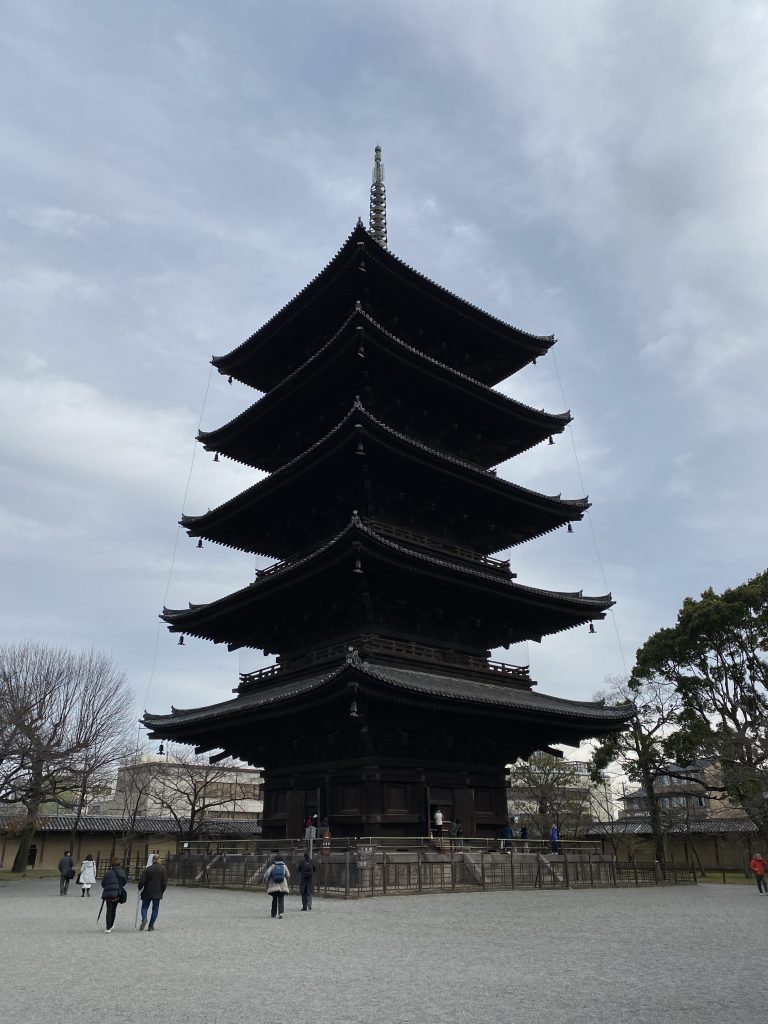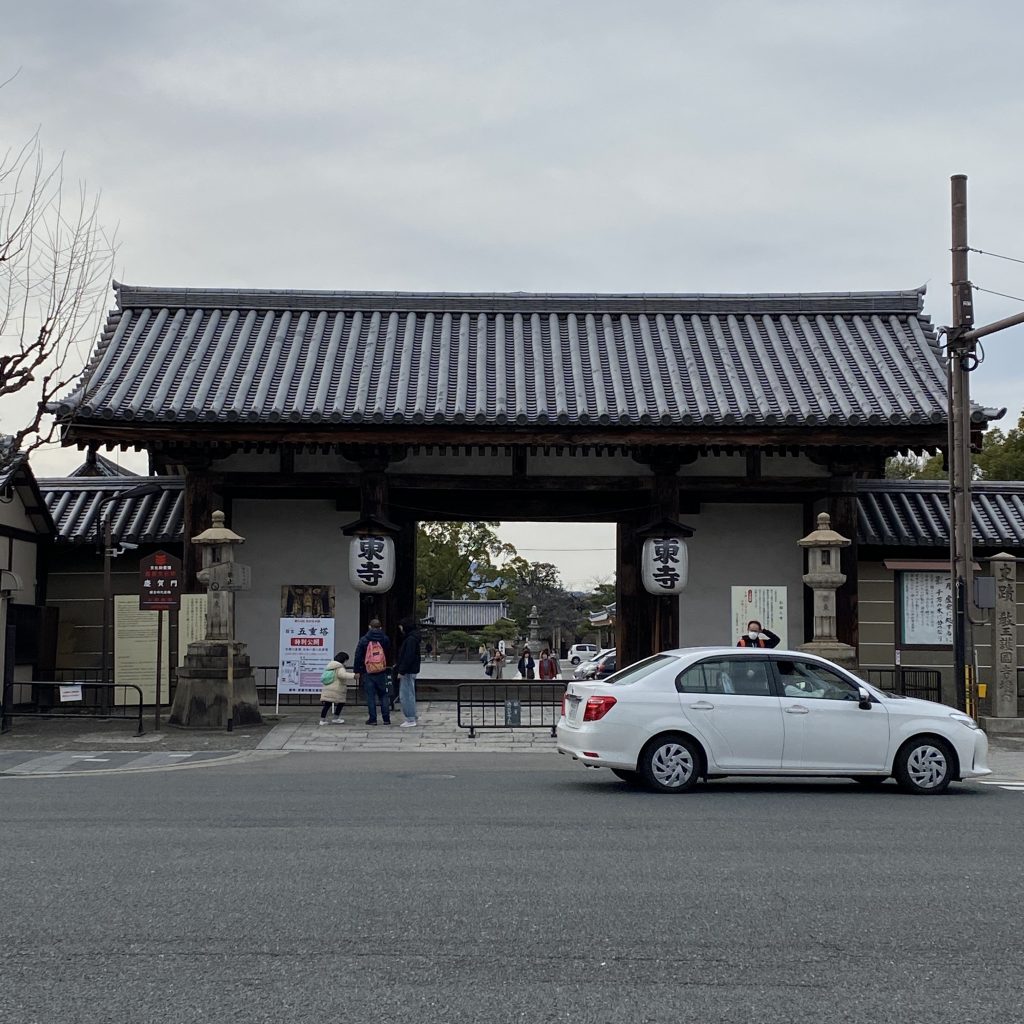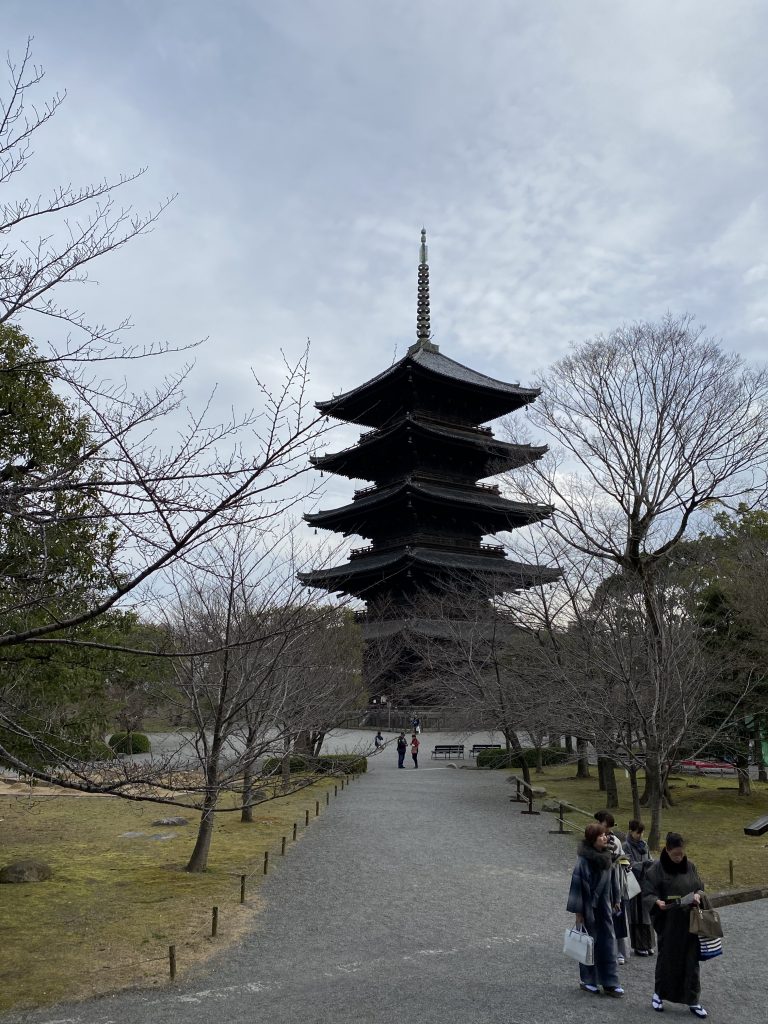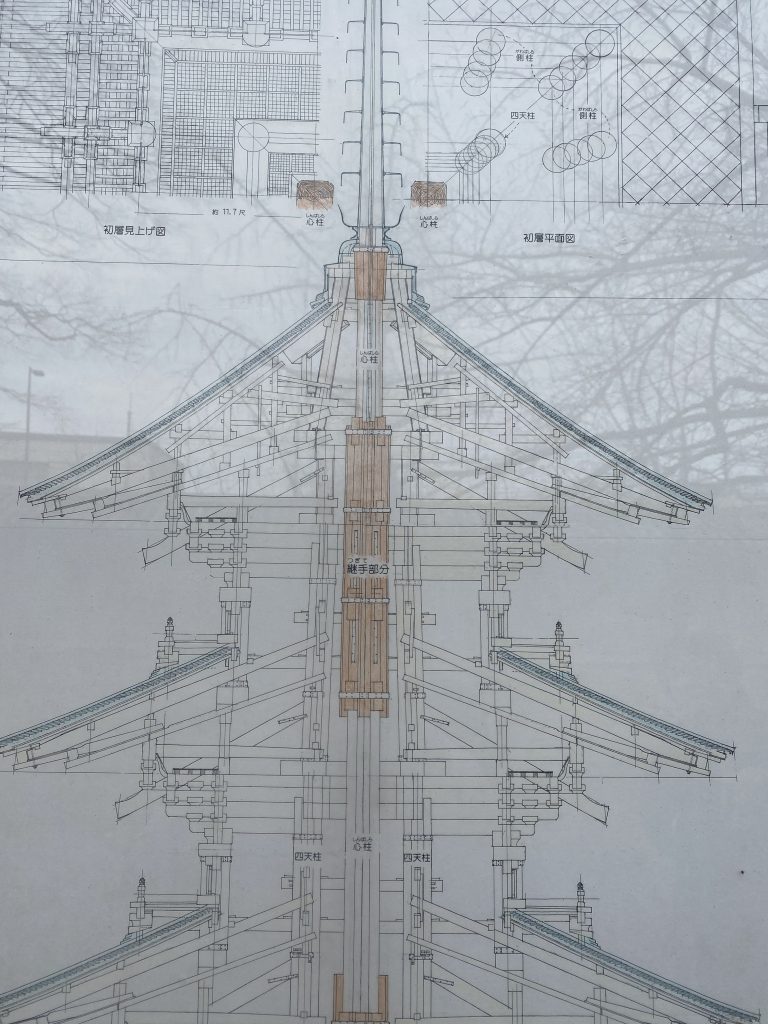In 794, when the capital of Japan was transferred to Kyoto from Nara, two huge temples were built on the east and the west sides of the main entrance of the Imperial City of Heiankyo( the former name of the city of Kyoto). Unfortunately, the temple on the west side no longer exists, but To-ji, which literally means “East Temple”, has survived to the present day.
In 823, the Emperor Saga honored the monk Kukai and gave the temple to him. Kukai made To-ji the central seminary of Shingon(or Esoteric) Buddhism and added various buildings such as the pagoda and halls. Since then, To-ji has been the headquarters of the Shingon sect of Japanese Buddhism. The major buildings were damaged by earthquakes and fires but have been rebuilt to retain the original layout and the architectural styles. Many magnificent treasures such as statues, carvings, paintings and artworks are housed in these temple buildings.
Five-Storied Pagoda
The pagoda is a structure used to house relics of the historical Buddha. The pagoda of To-ji is said to be a form of Dainichi Nyorai himself. The inside of the pagoda is normally closed to the public, except for special openings. Four Buddha statues are located on a platform on the ground level of the pagoda surrounding the main pillar. The statues are facing in four different directions and Buddhist pictures and motifs are painted on the pillars and walls.
To-ji’s five-storied pagoda is the highest pagoda in Japan, measuring 55m(187 feet). The present pagoda was built in 1644. The first one was built in the 19th century. Since then, the pagodas burned down four times, sometimes after being struck by lightning. But none of them were knocked down by an earthquake. The vibrations caused by an earthquake are absorbed by the interlocked parts of the pagoda and the force of vibrations is gradually damped as they move to the higher parts of the pagoda. In addition, each level moves independently of the others, in a motion known as the “snake dance”. This further absorbs and damps the energy of an earthquake. Finally, the pillars surrounding the main supports on each level are short, so that the force tending to return the structure to its original position is greater than the deflecting force, which also prevents the pagoda from collapsing.
Kyoto, 京都府, Japan






